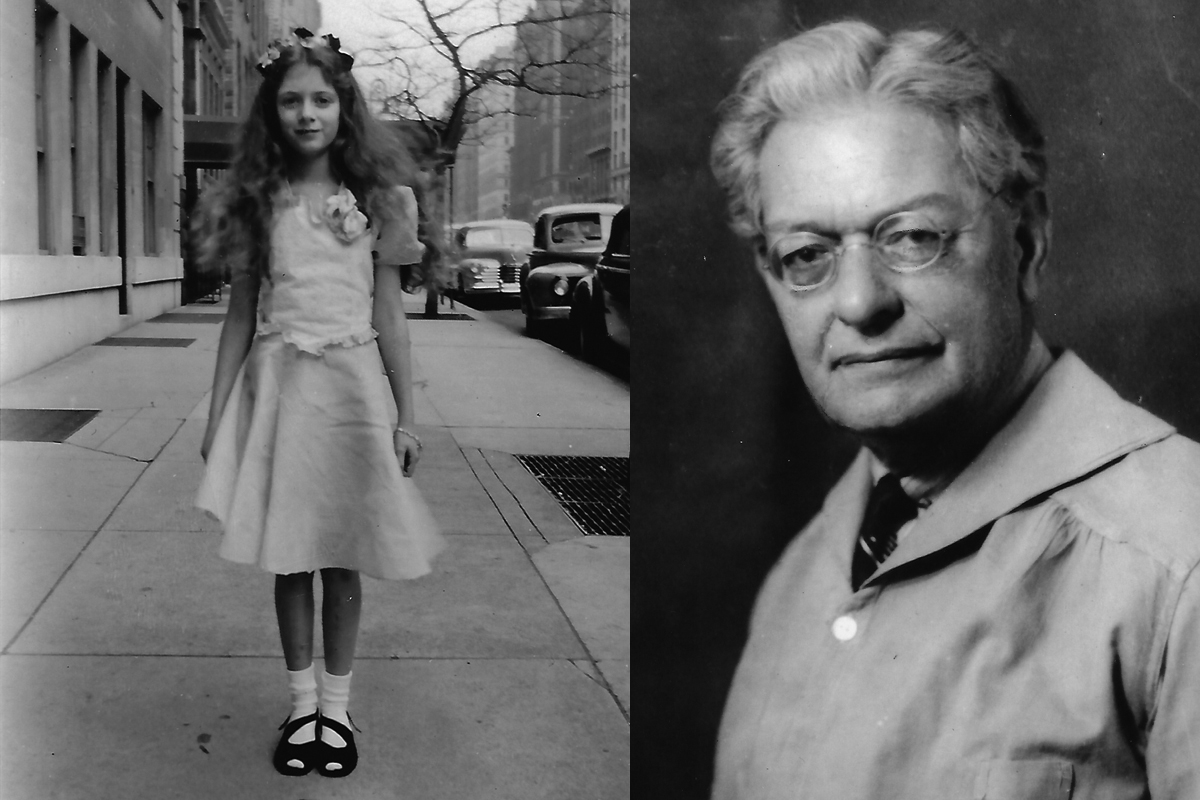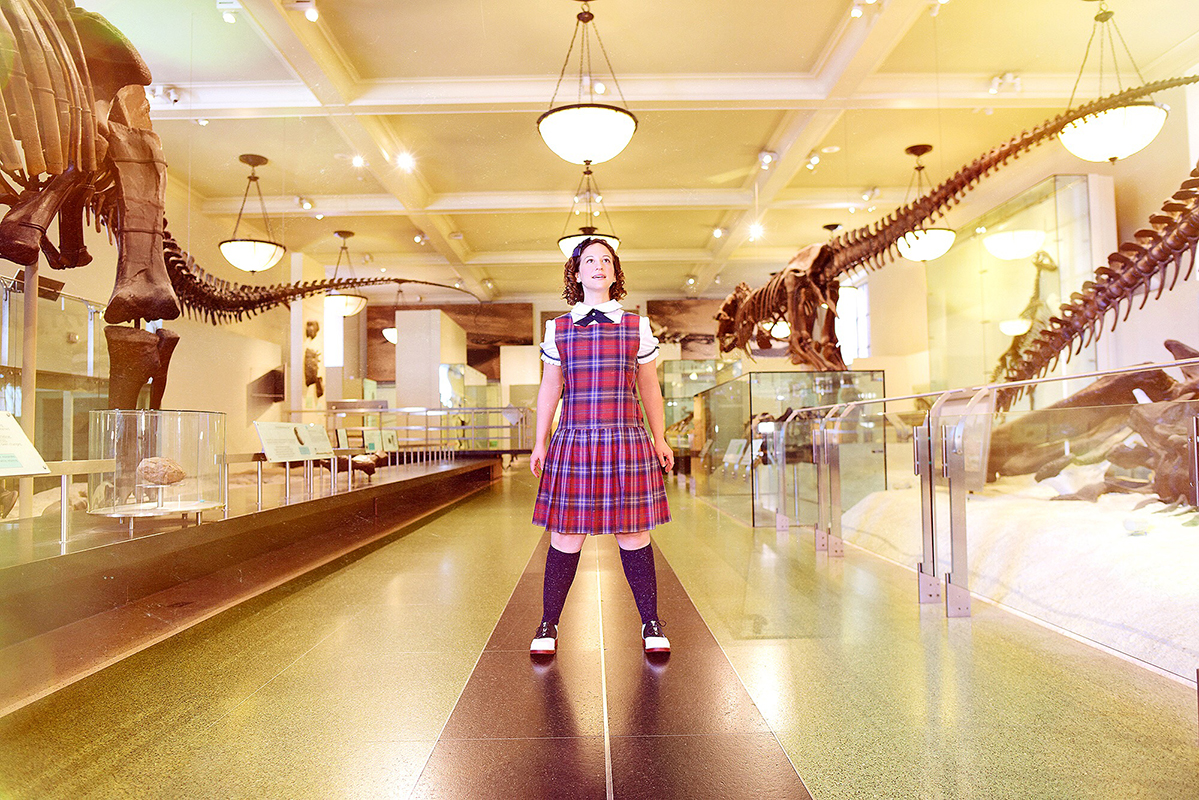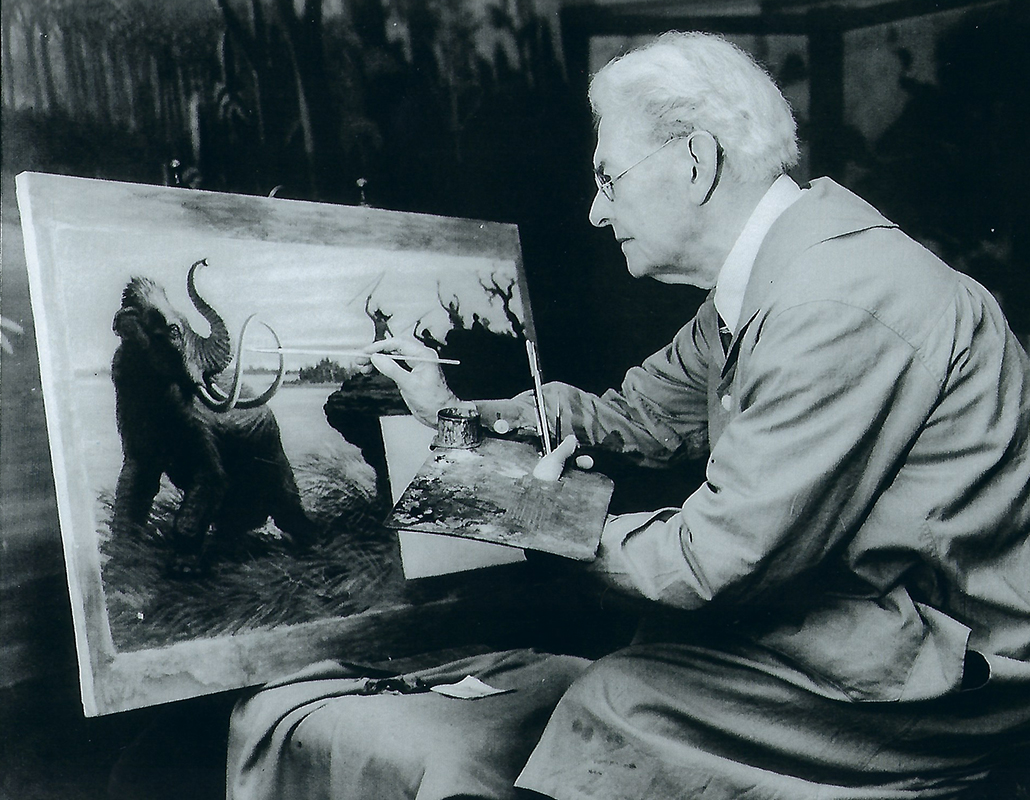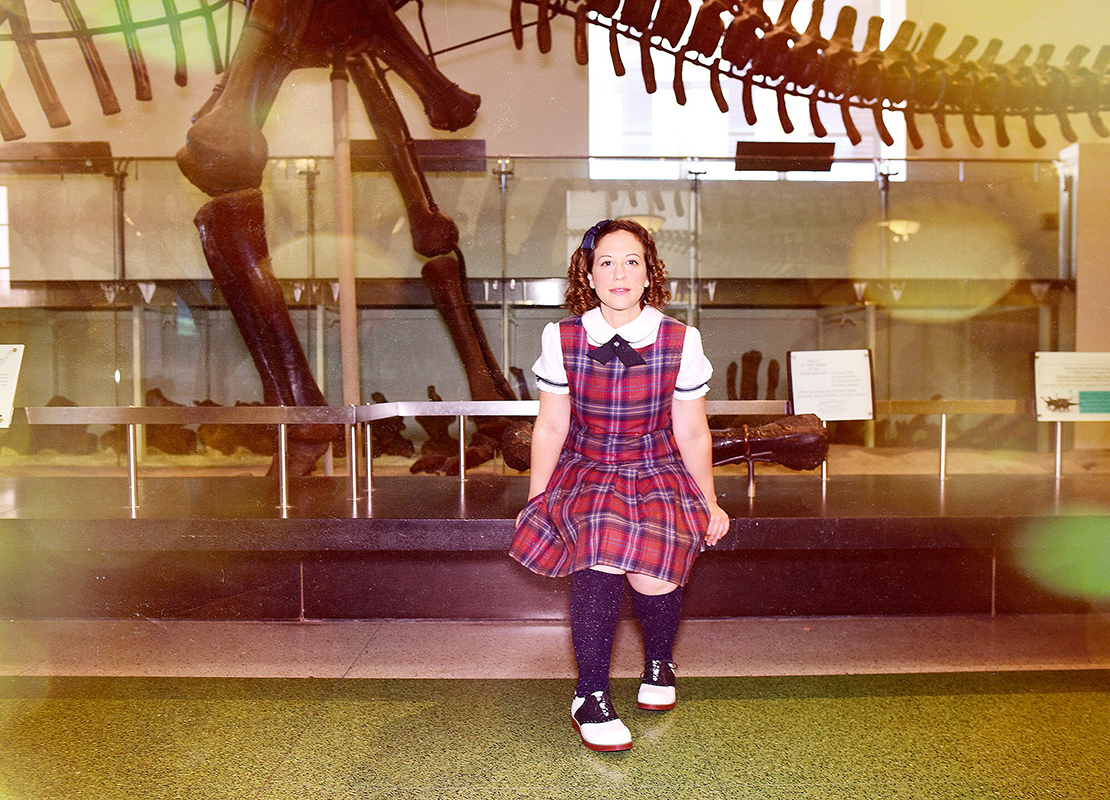Dinosaurs Make an Operatic Debut at Museum with 'Rhoda and the Fossil Hunt'
But starting today (Sept. 23), AMNH's Hall of Saurischian Dinosaurs will serve a different purpose, temporarily acting as a stage for the world premiere of a 20-minute opera about a girl named Rhoda who visits the museum with her grandfather — renowned paleo-artist Charles R. Knight — and embarks on a fossil-finding adventure.
Developed by the company On Site Opera in partnership with AMNH, "Rhoda and the Fossil Hunt" is based on the experiences of Knight's real-life granddaughter, Rhoda Knight Kalt. The museum's spectacular fossil dinosaur displays will serve as the backdrop for the young girl's story of wonder and discovery. [Paleo-Art: Dinosaurs Come to Life in Stunning Illustrations]
Born in Brooklyn in 1874, Knight was a commercial illustrator in his 20s when he launched an artistic relationship with AMNH that would span more than half a century. His paintings offered a new perspective on long-extinct animals known only from their bones, and he posed them dynamically, painting them in natural environments. Knight worked closely with museum curators and paleontologists, while also drawing from his own observations of living animals, to create scenes that brought dinosaurs and prehistoric mammals to life.
Knight's granddaughter often accompanied him on the weekly trips to AMNH to peruse fossils and meet with experts, beginning when she was about 7 years old, Kalt told Live Science. Knight would often consult at great length with AMNH experts, while Kalt waited quietly for him to finish — no matter how long it took, she said.
"We'd go upstairs with the scientists, and it was nothing for my grandfather to stand for an hour discussing one bone," Kalt recalled. "I never interrupted. I could never be impatient — if I was impatient, I wouldn't have been able to go with him," she added.

Kalt's stories of these jaunts caught the attention of On Site Opera's co-founder and artistic director Eric Einhorn when the two met at a fundraiser. Their conversations sparked the idea of creating an original opera — the company's first — to be performed at the museum where she and Knight had spent countless hours, he told Live Science.
But as Einhorn began writing the libretto, he realized that Kalt's impeccable behavior during these visits — sitting quietly for hours on end — didn't translate into compelling drama. Kalt was simply "too good," Einhorn said.
Sign up for the Live Science daily newsletter now
Get the world’s most fascinating discoveries delivered straight to your inbox.
"She was very well-behaved, so there was no conflict," he explained. "There was nothing quite juicy enough to mine for an opera story."

With Kalt's permission, Einhorn wrote an original story based on her recollections. In the opera, Rhoda leaps into action after hearing about a new fossil discovery related to a dinosaur in the genus Deinocheirus (dye-no-KYE-rus). For decades, this large bird-like dinosaur was known only from a pair of enormous arms measuring 8 feet (2.4 meters) in length.
Rhoda strikes out to search for missing fossils in the museum with a "clue" in hand — a Deinocheirus talon — and along the way, she learns about the dinosaur family tree and how birds are living dinosaurs, Einhorn said. [7 Surprising Dinosaur Facts]

Another hurdle for the opera's creative team was incorporating the museum's exhibits and fossil displays into a musical narrative that would take full advantage of the unique space, Einhorn added.
"I was really interested in a story that would take the performers and the audience through the hall and to multiple locations, so I had to figure out how to do that," Einhorn said.
And if the singers were on the move, the orchestra would have to be mobile, too. Composer John Musto rose to the challenge with arrangements that allowed individual musicians to stop playing and quickly change their positions — moving their instruments from a location near the head of an enormous sauropod skeleton, all the way down to its tail — while the rest of the orchestra kept playing, he told Live Science. Once the musicians had moved, they could begin playing again, freeing the other musicians to relocate to the new spot, Musto said.

Much as Knight straddled the worlds of art and science, "Rhoda and the Fossil Hunt" highlights the importance of creative thinking as much as it showcases paleontology, Musto said.
"It's about this grandfather telling his granddaughter to use her imagination, and open her mind and not be so literal," he said.
"It's a story of her taking what he says literally — because he tells her to look for certain fossil bones — but in fact he was talking figuratively. And she then realizes that she needs to live more in her imagination," Musto said.
"The piece isn't really about science or dinosaurs," he added. "It's about drama. It's about the relationship between these characters and the way they interact with each other. That's what opera is."
Witnessing the performance in such an unlikely location could also inspire audiences to see opera in a new light — as a living, breathing art form that can tell unexpected stories, appear in unusual settings and appeal to people of all ages, Einhorn told Live Science.
"I'd like people to look at both sides of the experience — coming into the museum hall and seeing an opera — with fresh eyes," he said.
"Rhoda and the Fossil Hunt" will be performed at AMNH from Sept. 23 to Oct. 15 at 11:30 a.m. on Fridays and at 12 p.m. and 2:30 p.m. on Saturdays and Sundays. Performances are free with museum admission and for museum members, through the On Site Opera's "Opera Free-for-All" initiative.
The character of Rhoda will be played by soprano Jennifer Zetlan; Charles R. Knight by baritone Robert Orth; and AMNH president and paleontologist Dr. Henry Fairfield Osborn by tenor Patrick Cook.
For more information about tickets and special performances, visit On Site Opera's website.
Original article on Live Science.

Mindy Weisberger is an editor at Scholastic and a former Live Science channel editor and senior writer. She has reported on general science, covering climate change, paleontology, biology and space. Mindy studied film at Columbia University; prior to Live Science she produced, wrote and directed media for the American Museum of Natural History in New York City. Her videos about dinosaurs, astrophysics, biodiversity and evolution appear in museums and science centers worldwide, earning awards such as the CINE Golden Eagle and the Communicator Award of Excellence. Her writing has also appeared in Scientific American, The Washington Post and How It Works Magazine. Her book "Rise of the Zombie Bugs: The Surprising Science of Parasitic Mind Control" will be published in spring 2025 by Johns Hopkins University Press.









